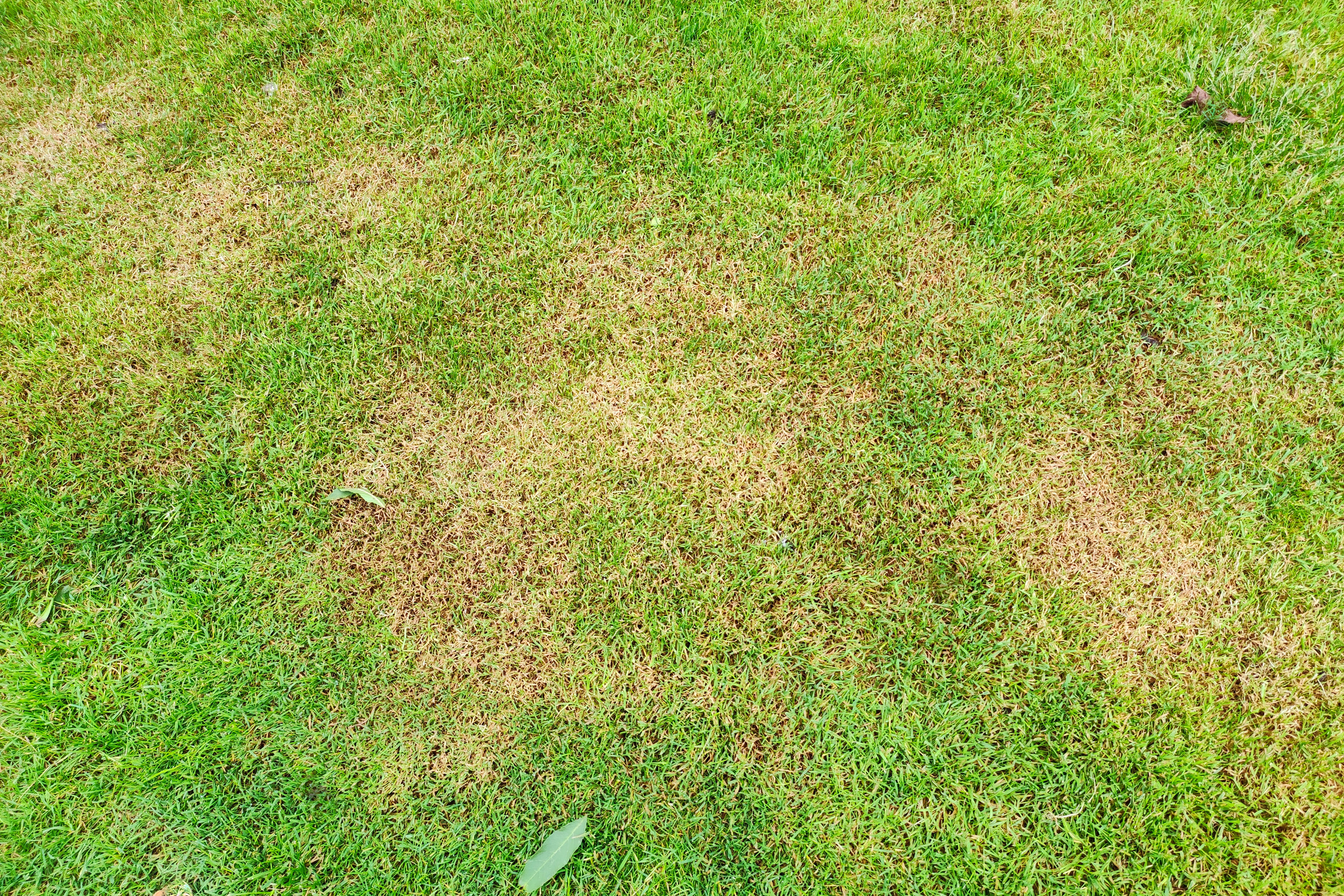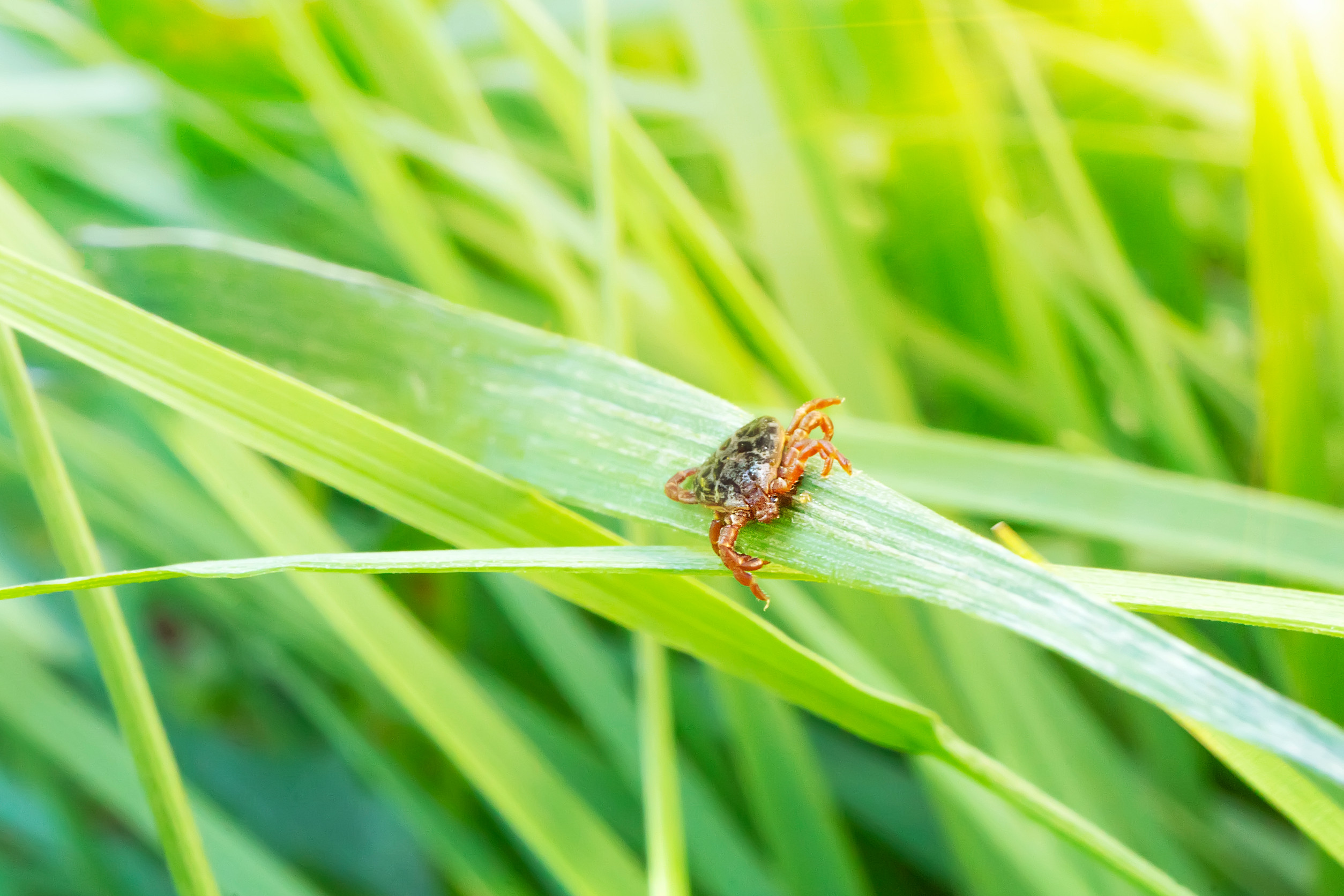
Image Source: 123rf.com
A lush, green lawn is the pride of many homeowners, but brown spots can quickly ruin its appeal. While these patches may seem random, they’re often caused by specific underlying issues that need your attention. Understanding the reasons behind these brown spots is the first step toward restoring your lawn’s health and vibrancy. Here are seven common causes of brown spots in grass and how to fix them.
1. Improper Watering
Brown spots often result from either overwatering or underwatering your lawn. Too much water can lead to root rot, while too little causes the grass to dry out and die. Adjust your watering schedule to ensure your lawn gets the right amount of moisture. Aim for deep, infrequent watering to encourage healthy root growth. Using a sprinkler system with timers can help maintain consistent hydration and prevent brown patches from forming.
2. Lawn Diseases
Fungal infections like brown patch disease are common culprits behind brown spots. These diseases thrive in warm, humid conditions, especially in lawns with poor drainage. Look for signs such as irregular patches and discolored blades. To combat lawn diseases, use appropriate fungicides and aerate your soil to improve airflow. Ensuring your grass has proper sunlight and drainage helps prevent fungal growth in the first place.
3. Pet Damage
Pets, especially dogs, can inadvertently cause brown spots by urinating on the lawn. The high concentration of nitrogen in their urine can burn the grass and leave unsightly patches. Training pets to use designated areas or diluting the affected spots with water immediately can minimize damage. There are also lawn care products designed to protect grass from pet-related damage.
4. Soil Compaction
Compacted soil restricts airflow, water absorption, and root growth, leading to brown spots. Heavy foot traffic or the use of heavy equipment can cause soil compaction over time. Aerating your lawn by poking small holes into the soil helps improve oxygen and water circulation. Pairing aeration with regular lawn maintenance encourages healthy grass growth and eliminates brown patches caused by compacted soil.
5. Pests

Image Source: 123rf.com
Certain pests, such as grubs or chinch bugs, feed on grass roots and can leave brown spots in their wake. Check for pests by digging into the soil near the affected areas and looking for larvae or insects. Applying appropriate pest control treatments, like insecticides or natural remedies, can prevent further damage. Keeping your lawn healthy and well-maintained helps deter pests from taking up residence.
6. Excess Fertilizer
Overusing fertilizer can “burn” your lawn, leaving brown spots where the grass has been damaged. This often happens when fertilizer is applied unevenly or in excess. To avoid this issue, follow the recommended application guidelines and use a spreader to ensure even coverage. Opting for slow-release fertilizers can reduce the risk of over-fertilizing and promote steady, healthy growth.
7. Mowing Mistakes
Mowing your lawn too short can weaken the grass and expose it to heat stress, resulting in brown spots. Additionally, using dull mower blades can tear grass instead of cutting it cleanly, making it more susceptible to disease. Maintain your lawn’s height by mowing regularly but never cutting more than one-third of its length. Sharpen your mower blades and avoid mowing during extreme heat to keep your grass healthy and vibrant.
Restore Your Lawn’s Green Glow
Brown spots in your grass are often a sign of deeper issues that can be resolved with proper care and attention. By identifying the underlying causes—whether it’s related to improper watering habits, lawn diseases, pest infestations, or even mowing mistakes—you can take targeted steps to revive your lawn and restore its lush, green appearance.
A healthy, thriving lawn requires consistent maintenance and a proactive approach to addressing problems as they arise. With the right knowledge and a bit of effort, you can transform your lawn into a vibrant space that’s both beautiful and resilient.
What methods have worked for you in combating brown spots in your yard? Share your insights and tips in the comments below—we’d love to hear from you!
Read More:
6 Budget-Friendly Garden Bed Ideas for Any Yard
Effective Lawn Care Tips for a Healthy and Green Yard

Tamila McDonald is a U.S. Army veteran with 20 years of service, including five years as a military financial advisor. After retiring from the Army, she spent eight years as an AFCPE-certified personal financial advisor for wounded warriors and their families. Now she writes about personal finance and benefits programs for numerous financial websites.
Leave a Reply